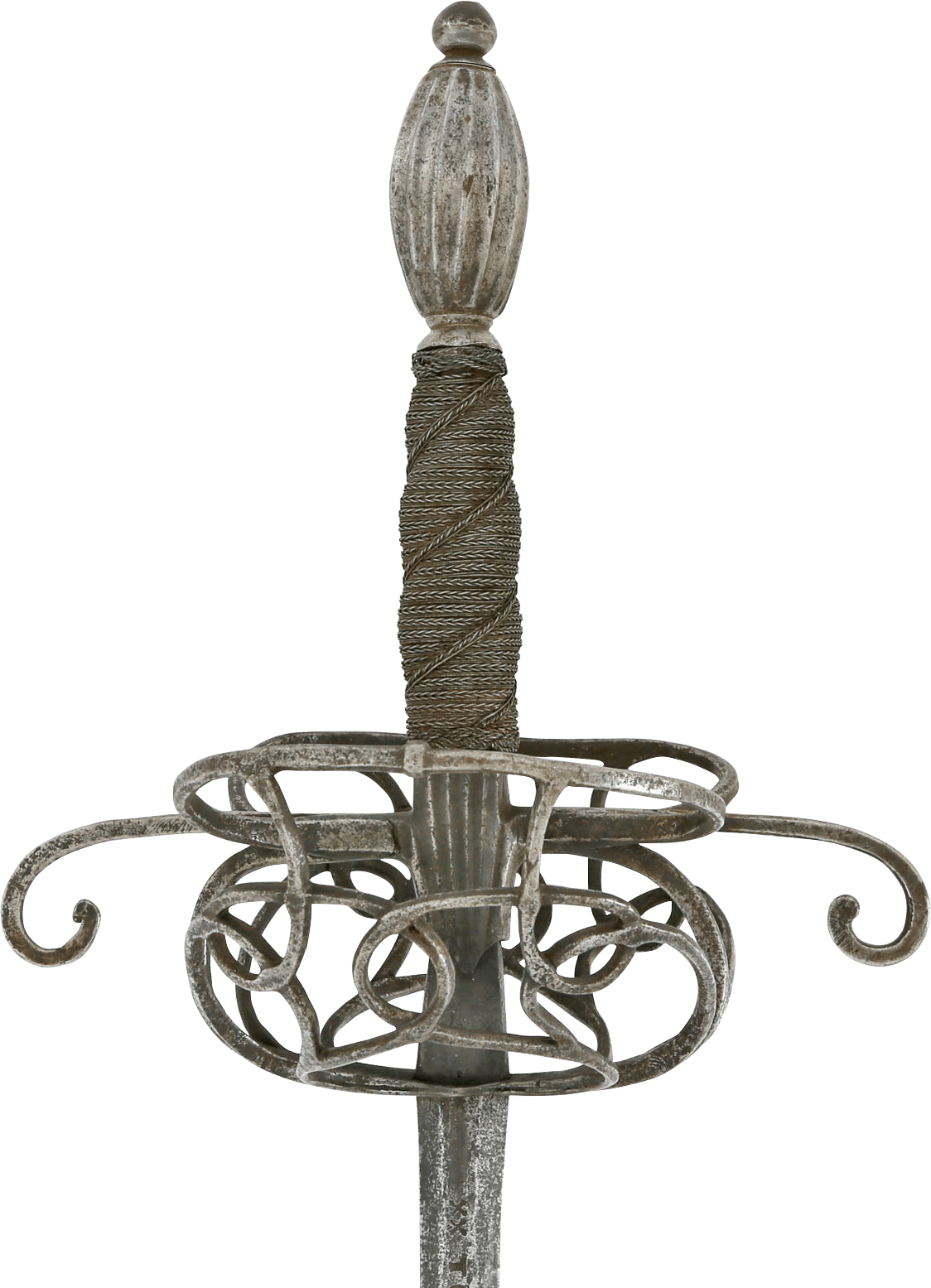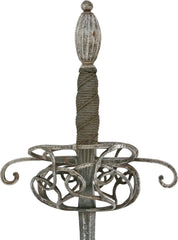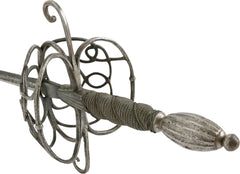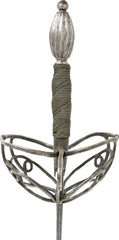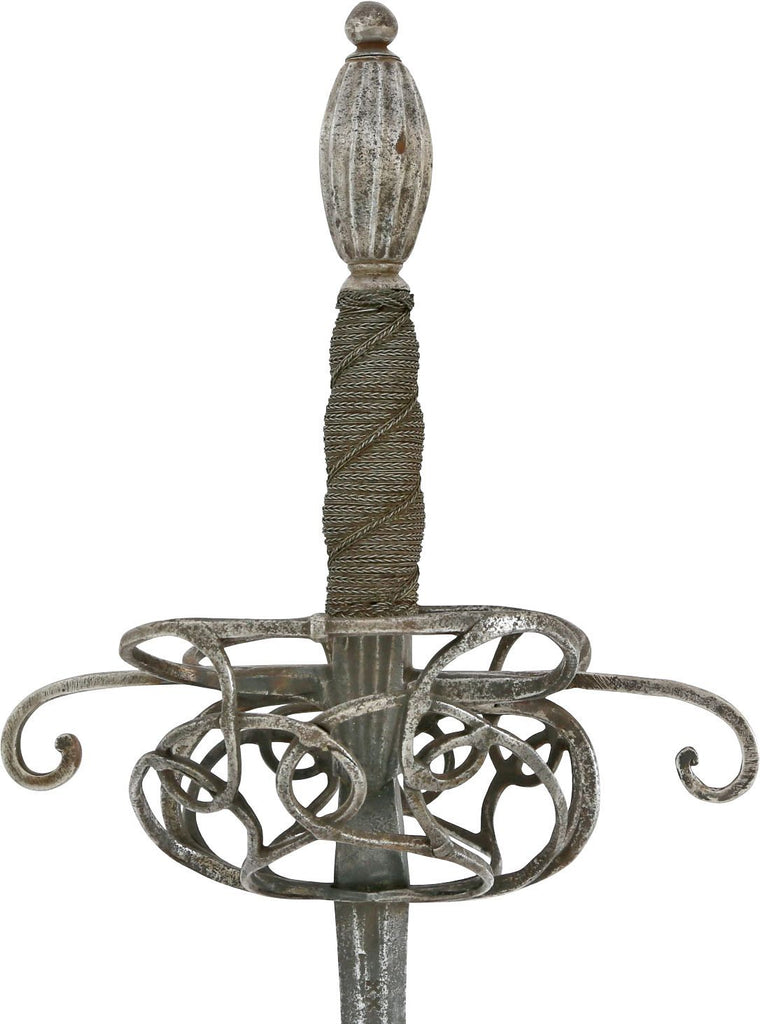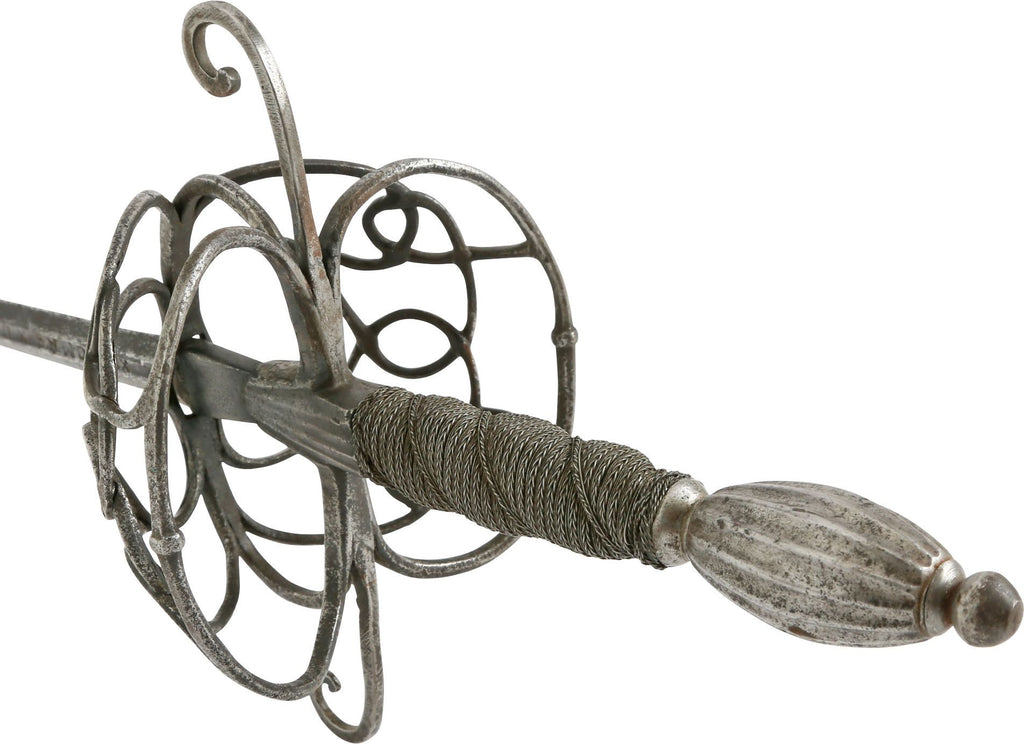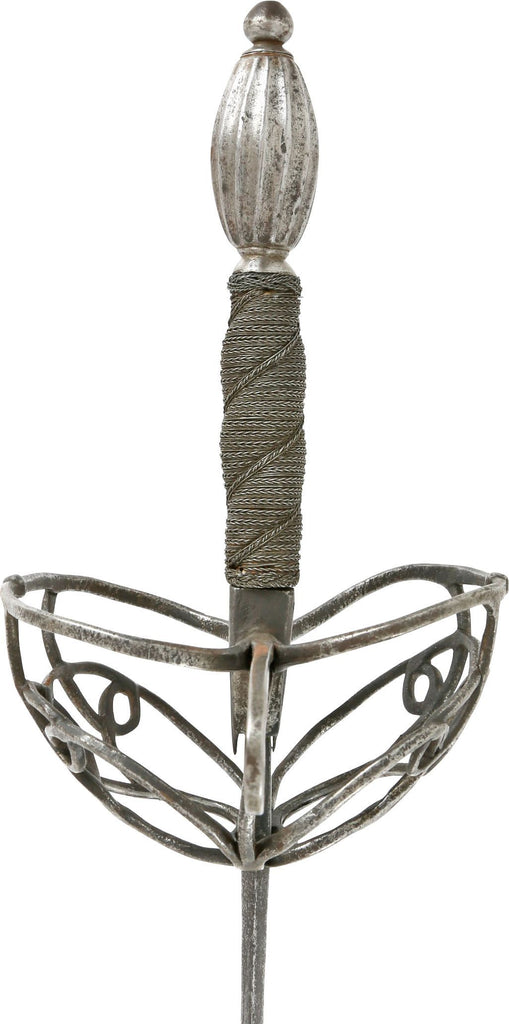The second quarter of the 17th century was a period of civil war and cultural unrest in Europe. At the social level, allegiances and political or religious conviction could lead to physical confrontations, which among the upper class took the form of duels. The evolution of fencing techniques in Italy influenced swordsmanship throughout Europe and duels were a format for applying those skills. Specialized dueling swords, of which this is one, suited for fighting to the death or first blood developed. Other examples are #A676 of the Wallace Collection, M2-1950, Victoria and Albert Museum, and #30, Valentine, from the Ansel Leo Collection. Iron hilt with curved bars forming the basket which is of relatively open form it was gripped by a gauntleted hand. Long grip and elongated pommel providing balance to the 36 ½” blade. The forte marked THOMAS D AIELES both sides in the deep fuller. The last 4 1/4" of the blade is expanded to leaf shape for delivery of the slashing cut stramazzone, which, if executed to the cheek of the opponent, could end the duel depending on the rules under which it was fought. As grabbing the opponent’s blade was allowable, it also served to dislodge the sword in that circumstance. It was equally suitable for fighting to the death. A good example from the years leading to the English Revolutions.





